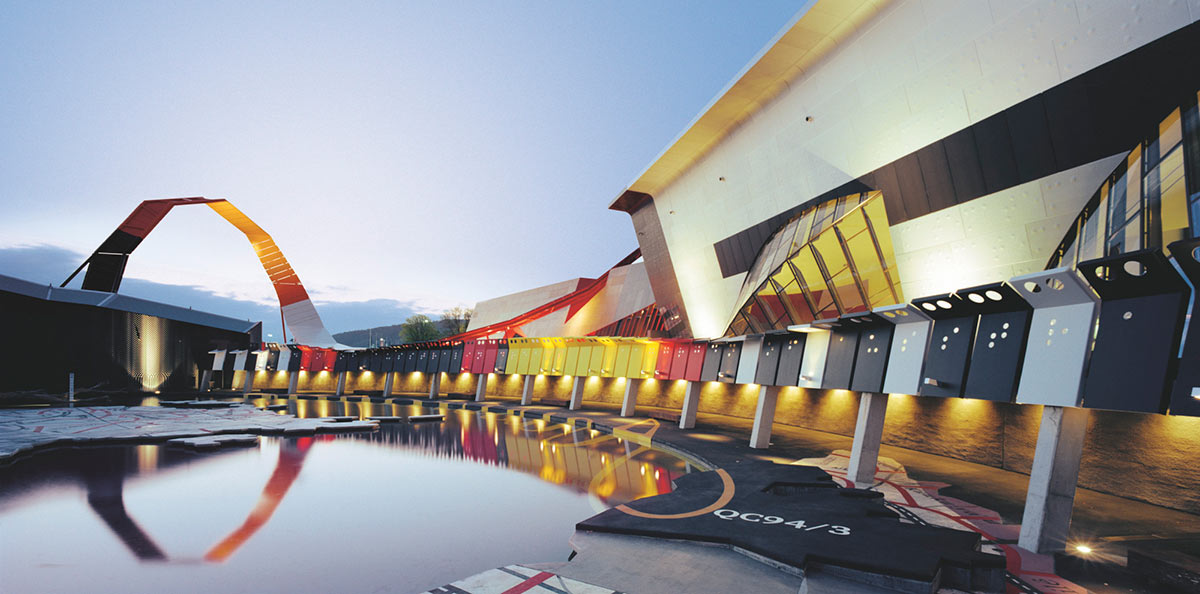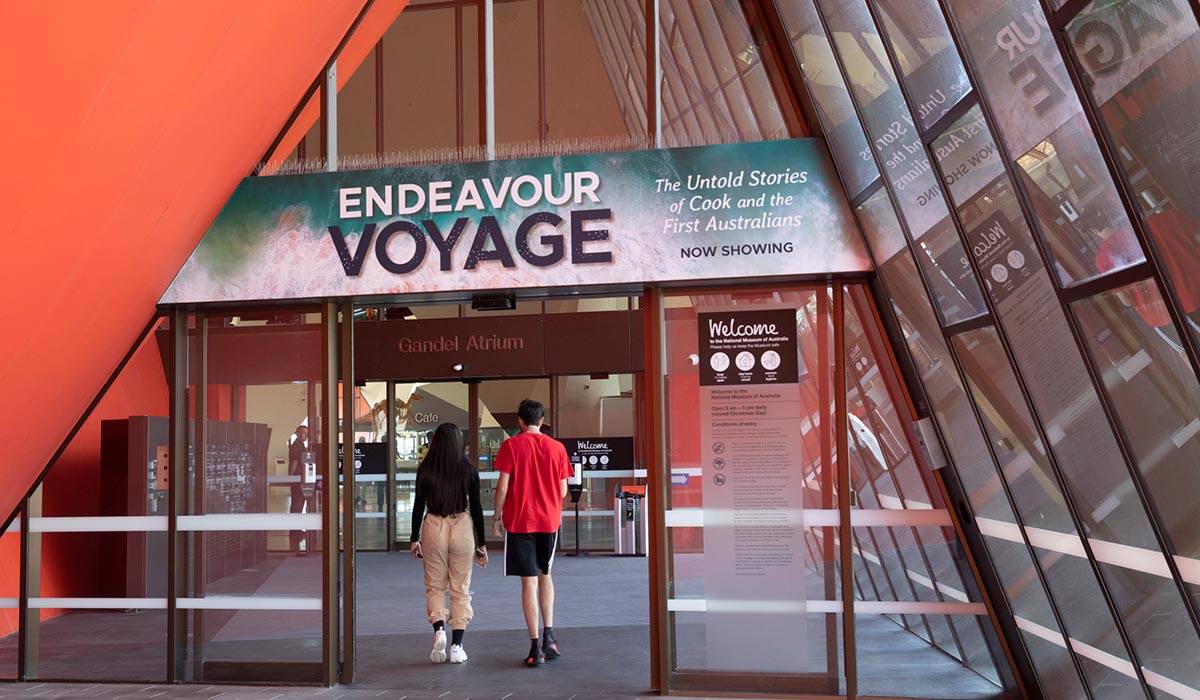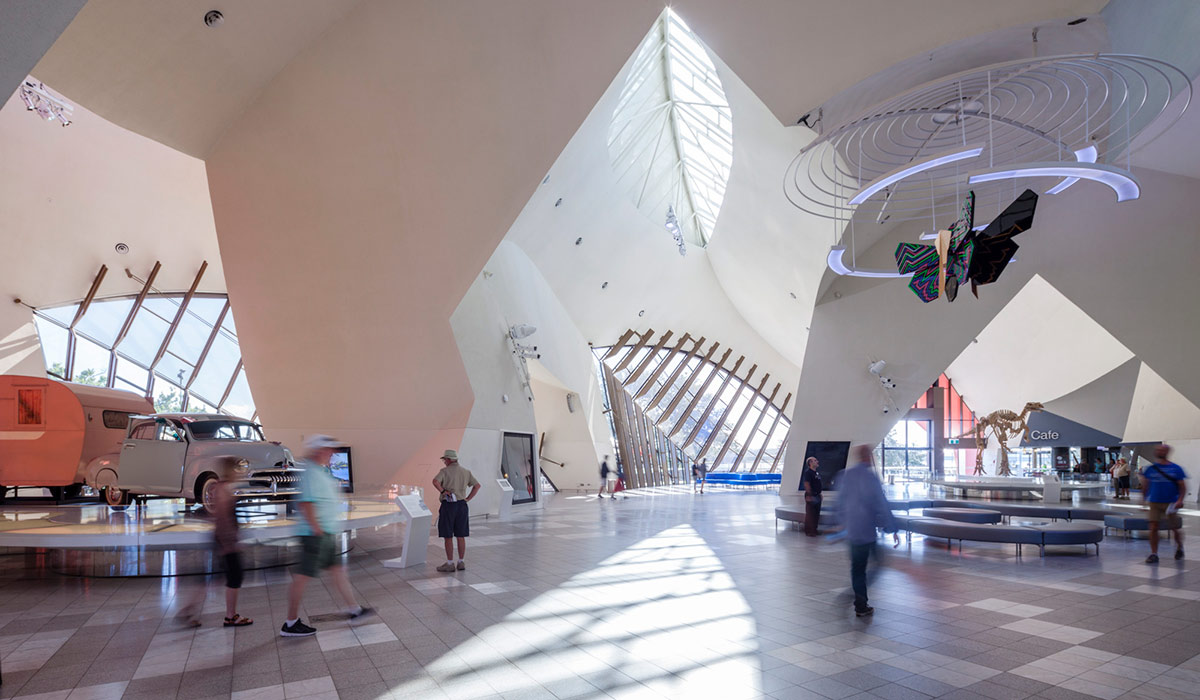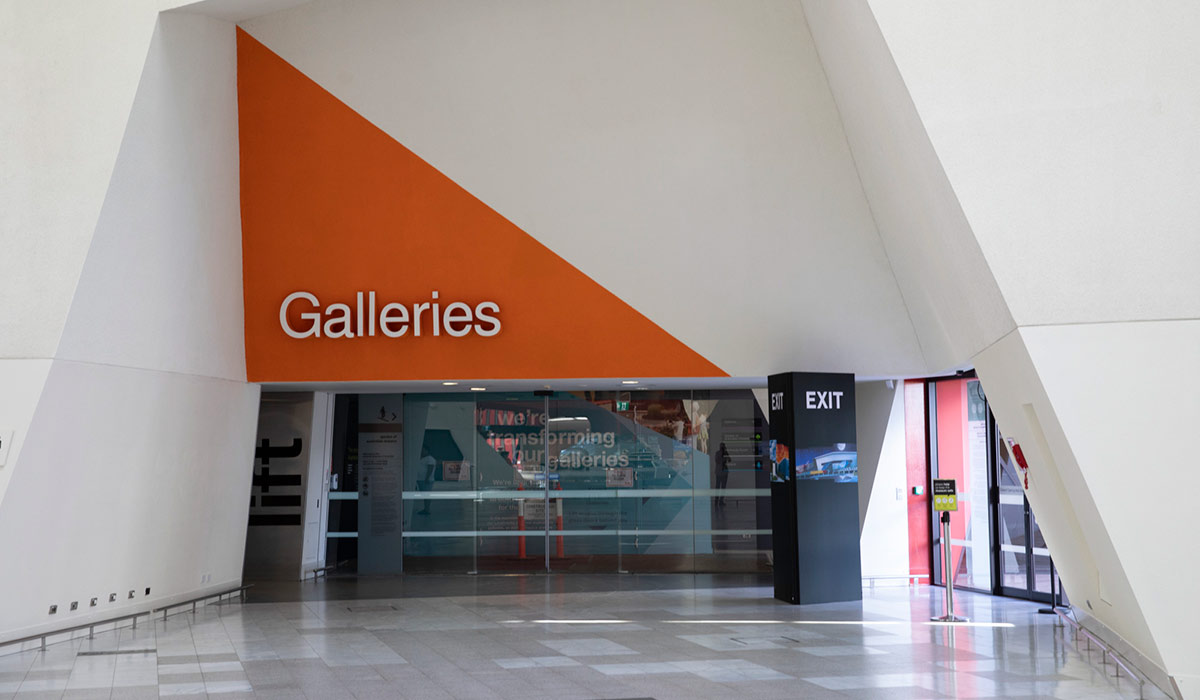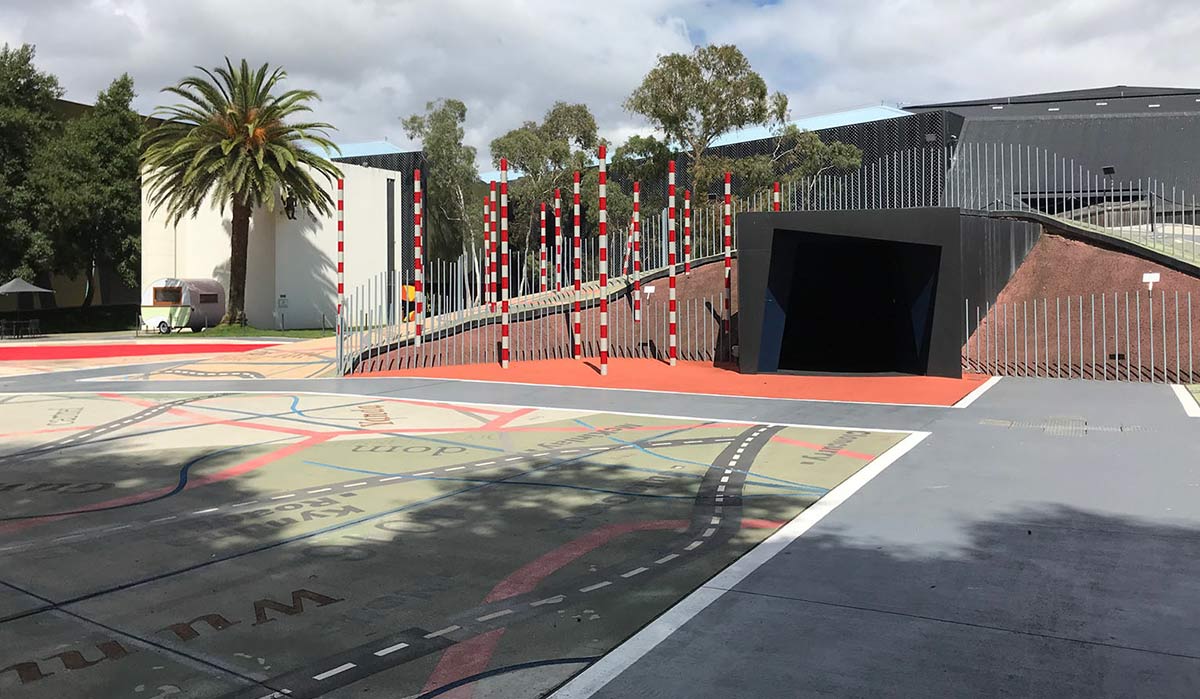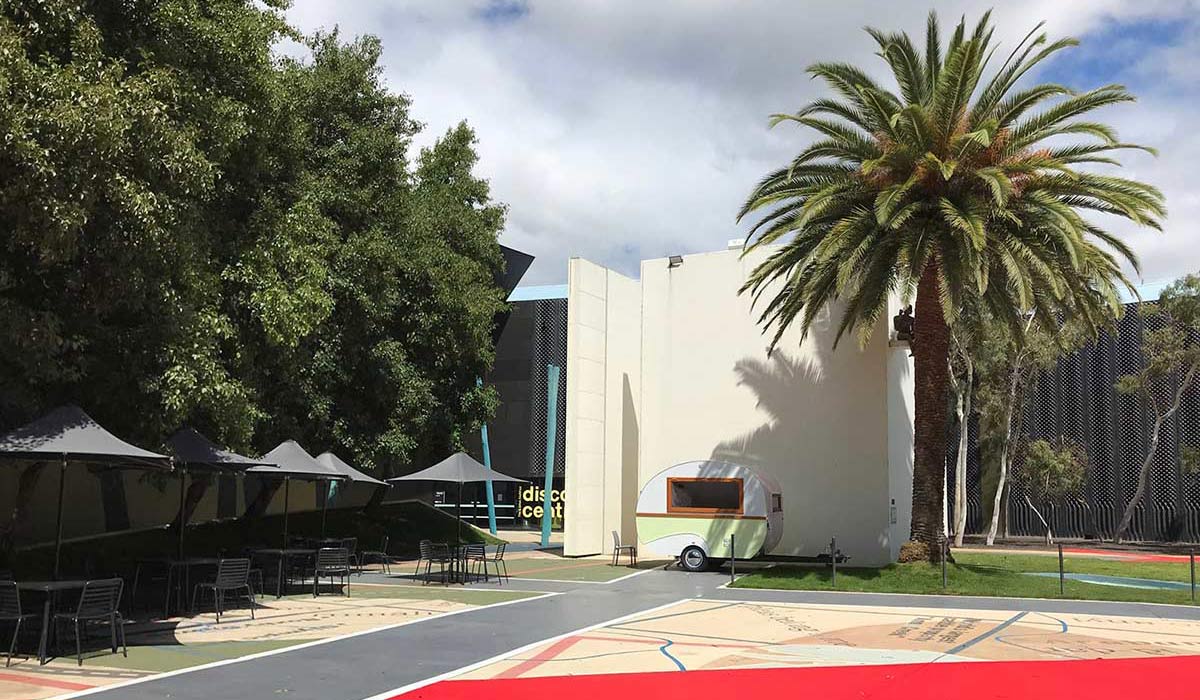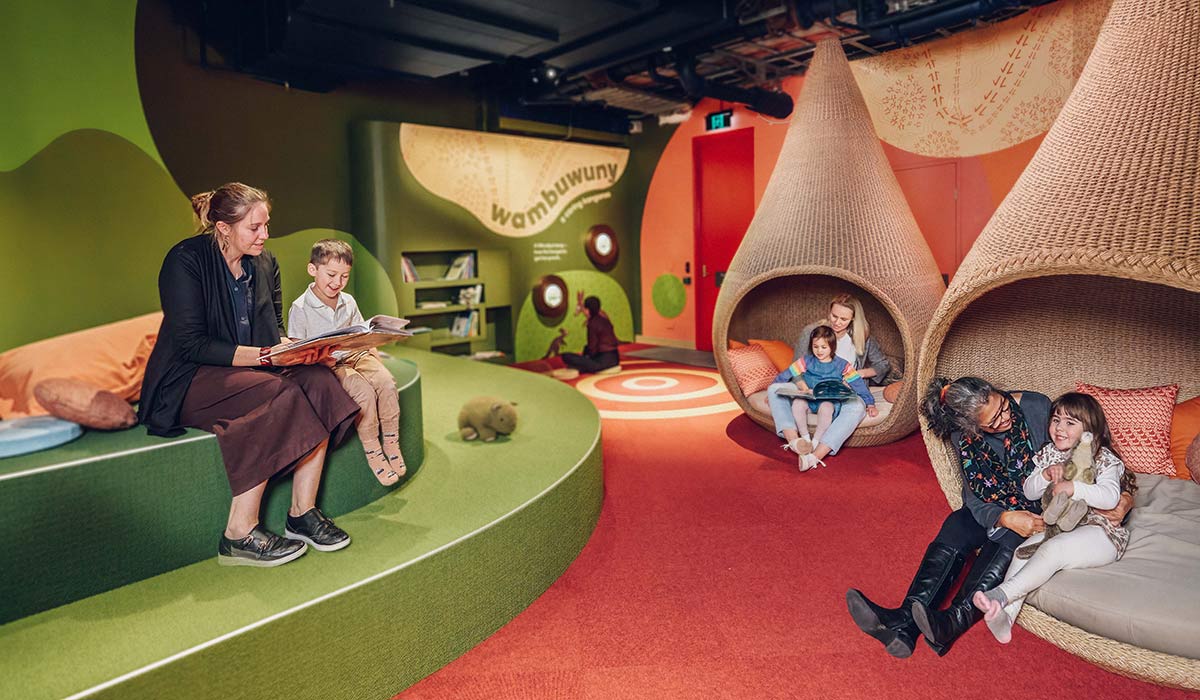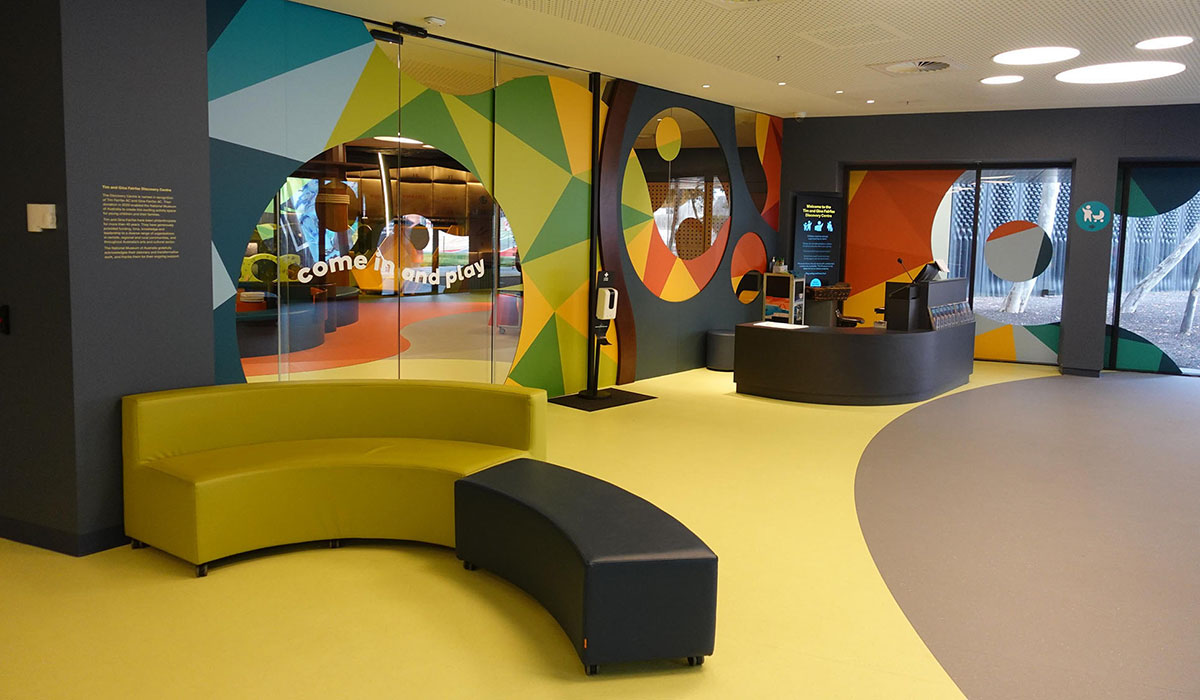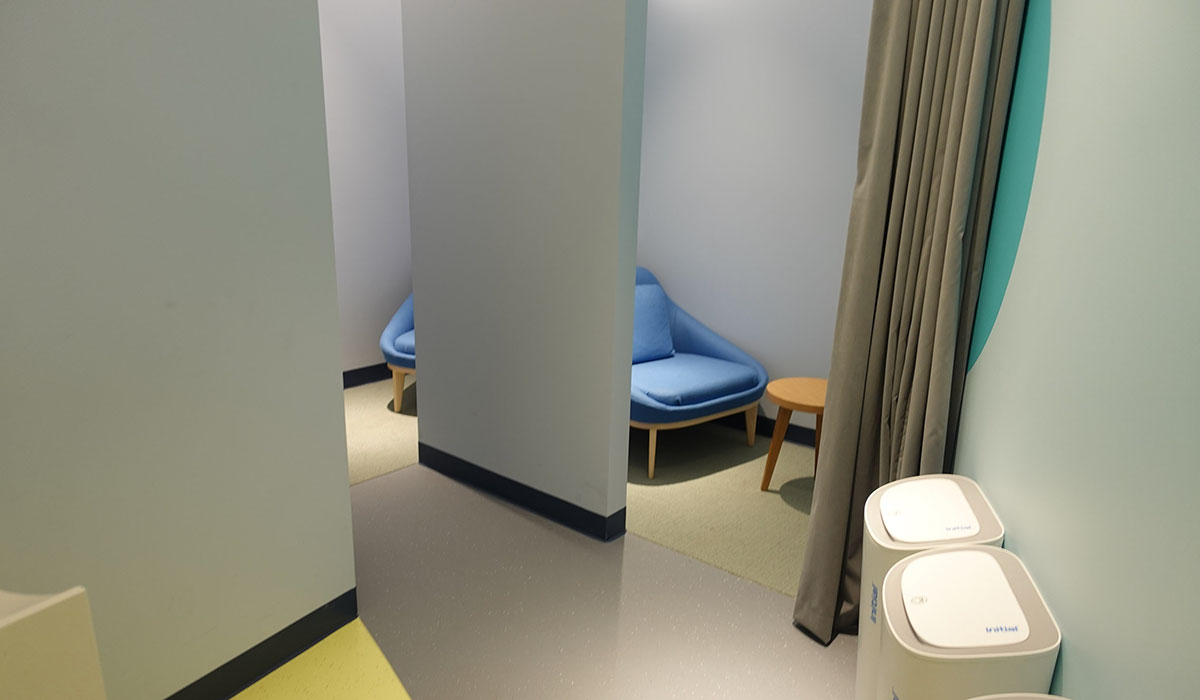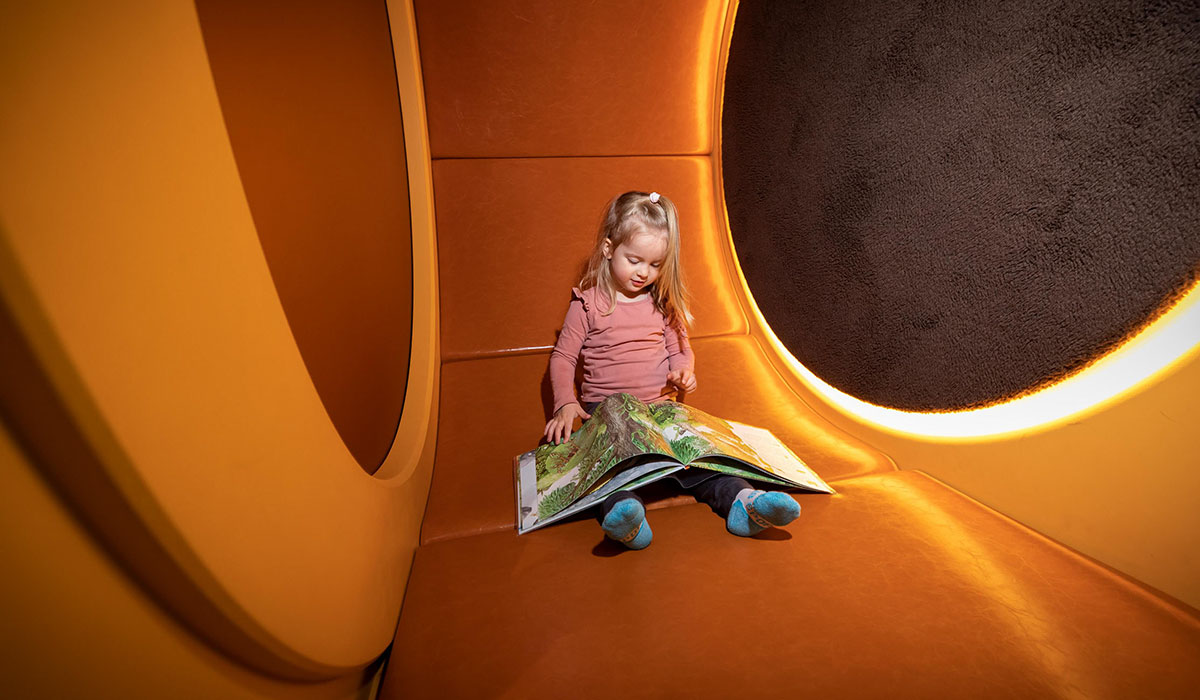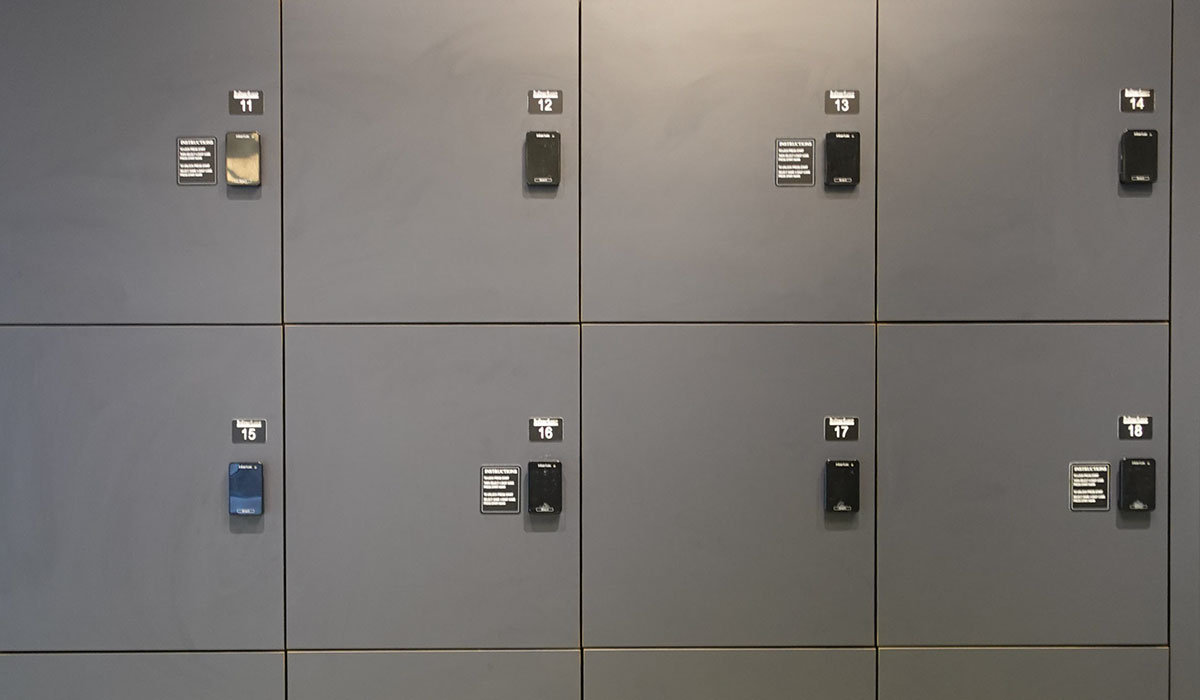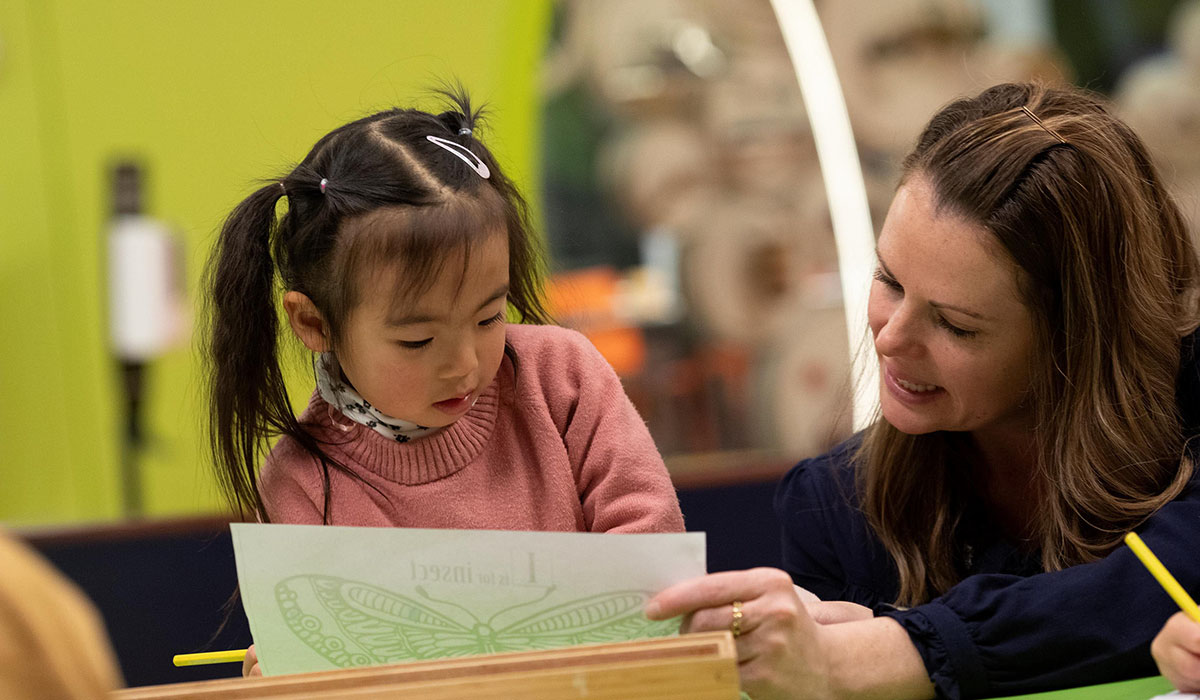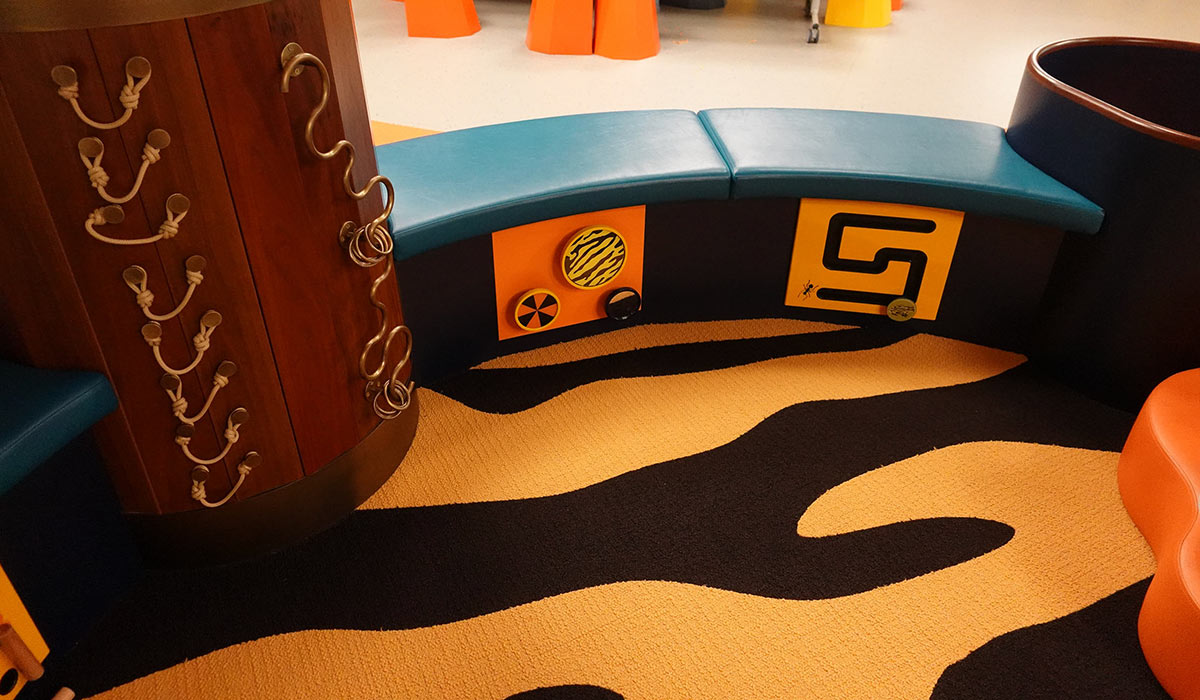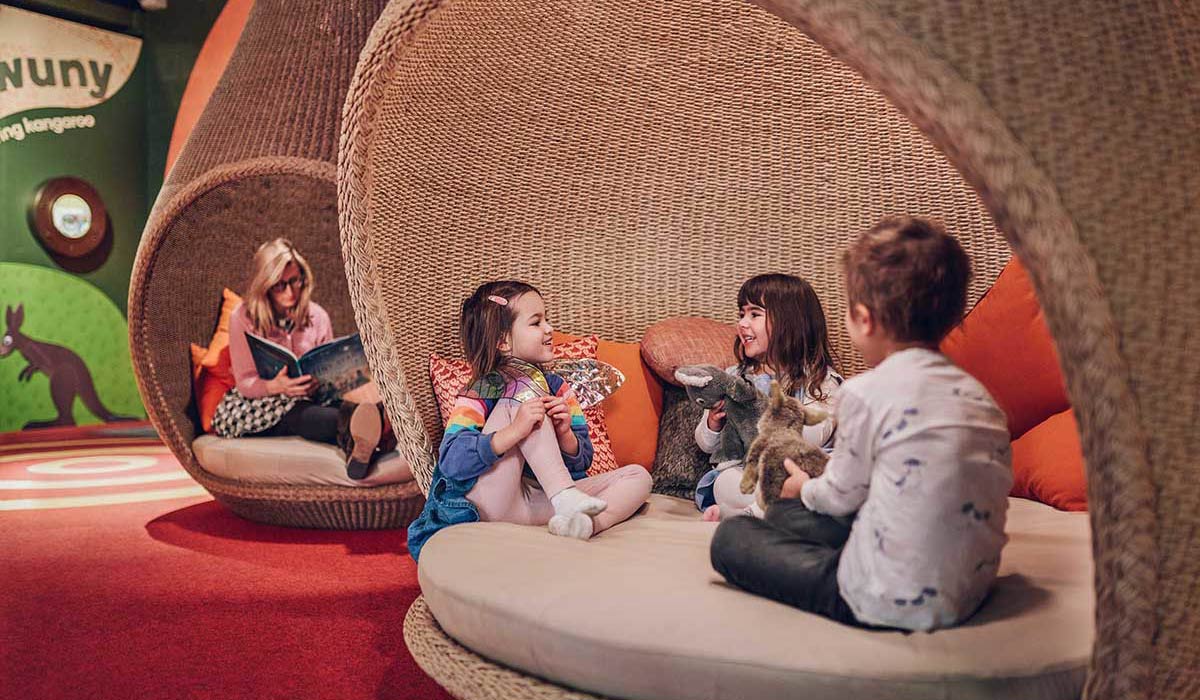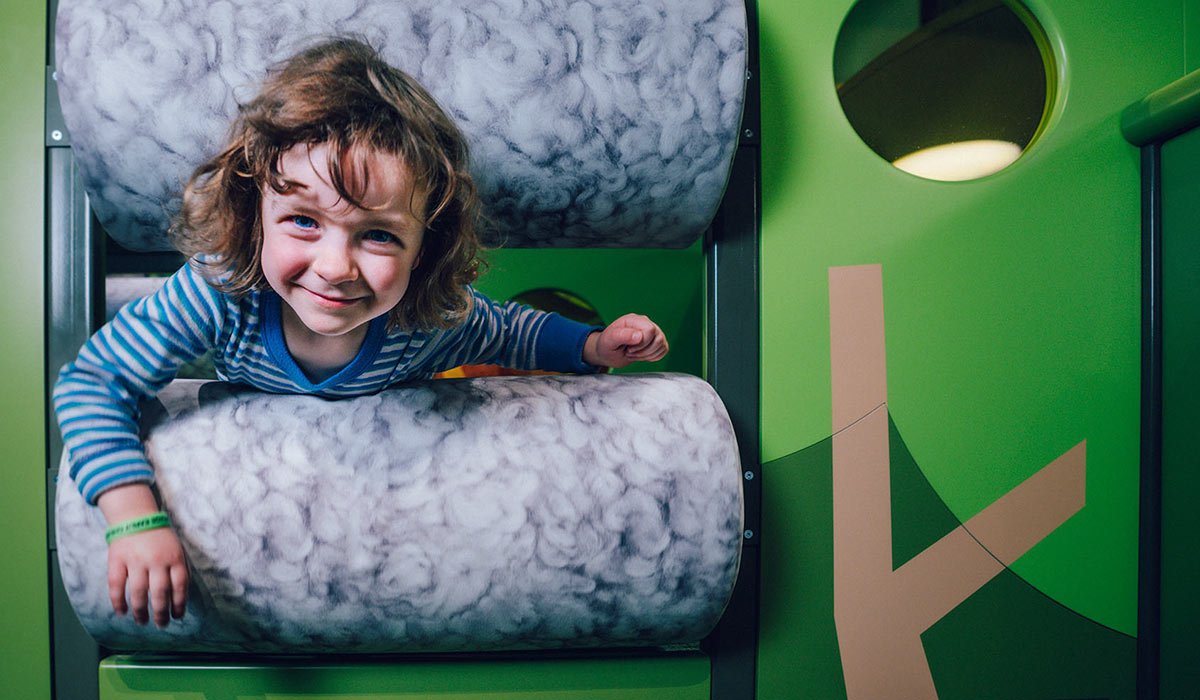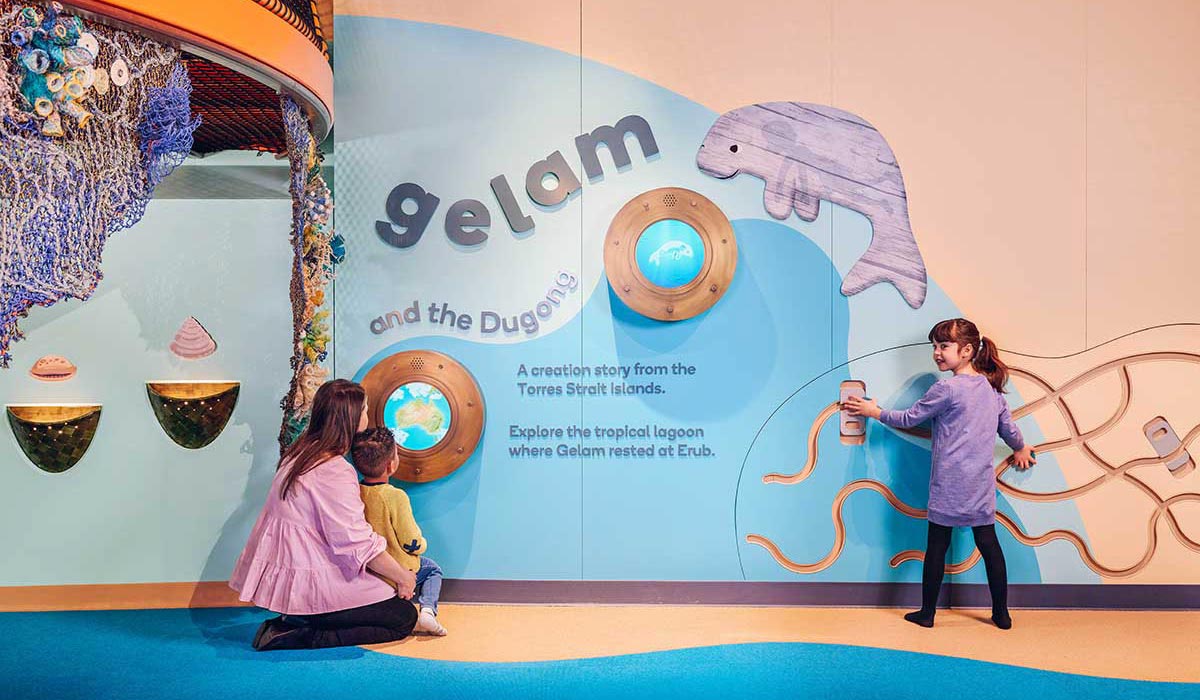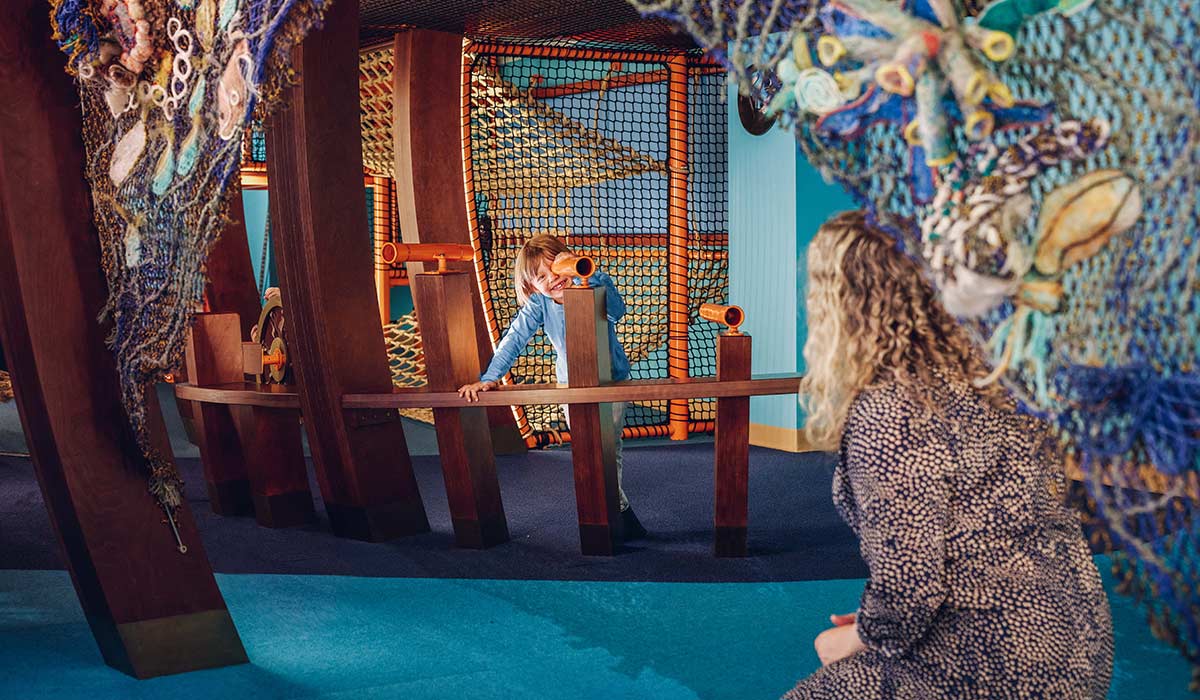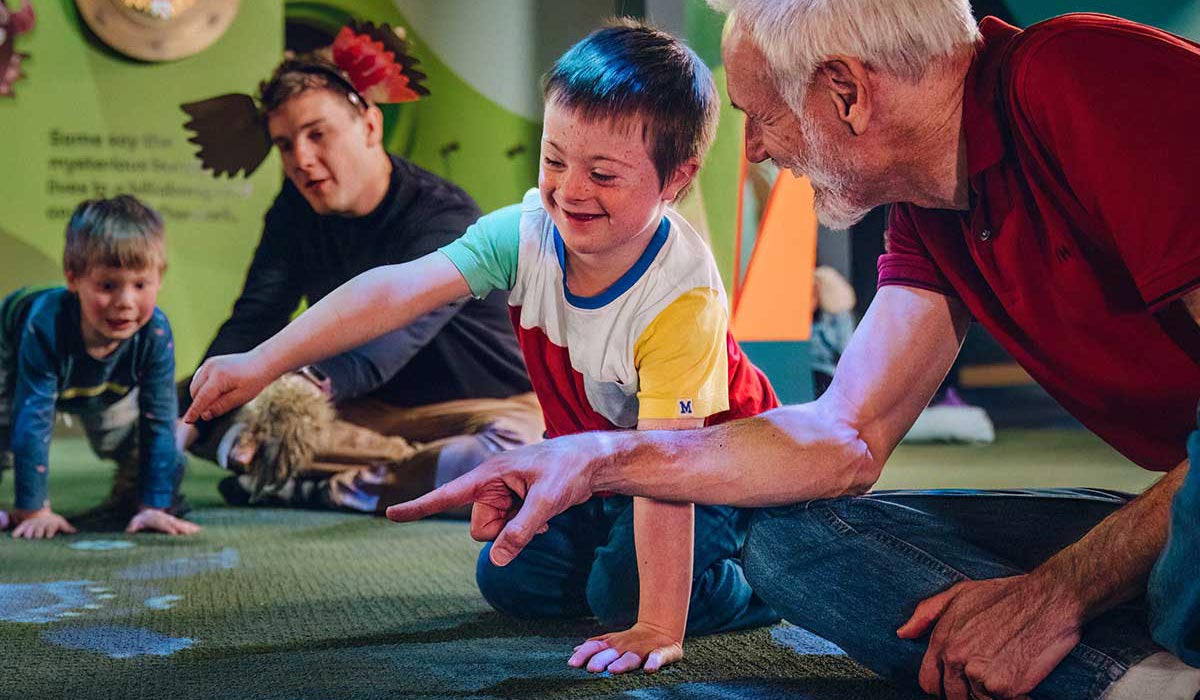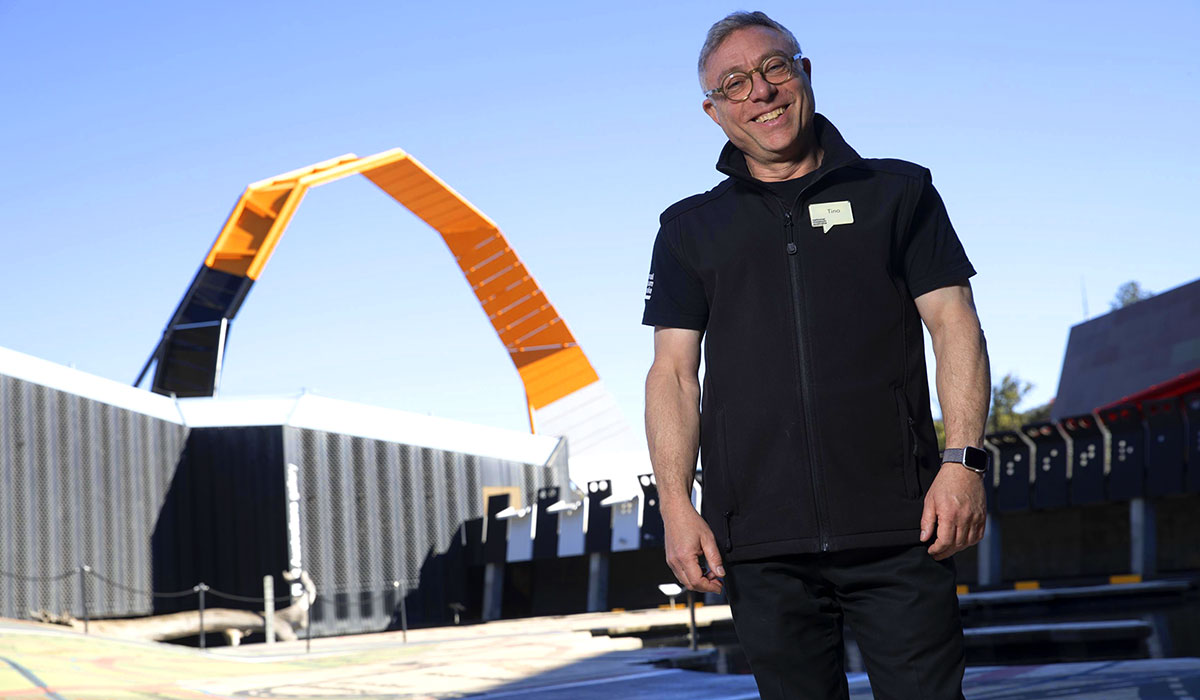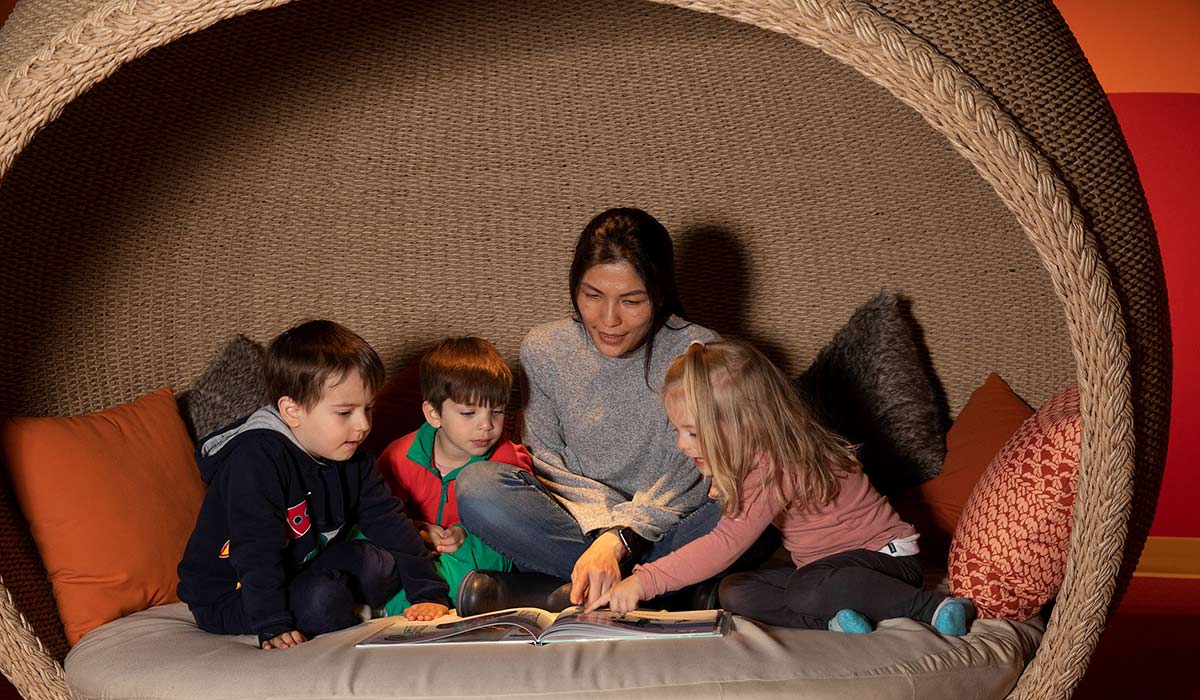Visiting the Tim and Gina Fairfax Discovery Centre
A visual story is a guide that helps visitors
This visual story tells you what to expect when you visit the Tim and Gina Fairfax Discovery Centre at the National Museum of Australia. Our staff are here to assist you and ensure you have a great experience.
- Download Visual story – Discovery Centre 1.9 mb pdf [ PDF | 1.9 mb ]
Travelling to the Museum
Visit our website nma.gov.au/visit/getting-here to find the different ways you can choose to get to the Museum.
Further accessibility information is available at nma.gov.au/visit/accessibility, where a separate visual story for visiting the museum can be downloaded.
Getting there
The Discovery Centre is at the National Museum of Australia. For more information about how to get to the National Museum of Australia, you can view the Museum’s accessibility information here: www.nma.gov.au/visit/accessibility
You can enter by the main entrance (red wall) into the Gandel Atrium.
When you enter through the main doors, you will come into the Gandel Atrium. It looks like this.
There will be a Museum staff member available to answer questions.
You can walk through the Gandel Atrium between the dinosaur and the shop. You will see an elevator to your left. Through the doors under the orange sign are stairs on the right. You can choose a way to go down to the lower floor.
When you are on the lower ground floor you can go through two more glass sliding doors, and then walk or wheel outside.
You will be now be in the Garden of Australian Dreams.
On the other side of the garden, is a white building. The Discovery Centre is behind the white building.
The entrance to the Discovery Centre is to the left of the white building.
About the Discovery Centre
The Tim and Gina Fairfax Discovery Centre is a space for children to play and learn. It is made for children of all abilities from birth to 6 years old. We usually call it ‘the Discovery Centre’ for short.
The Discovery Centre tells five different stories from Australian history. Each story has a different area to play in. You can play in different ways in each area. There is information about the different areas later in this visual story.
There can sometimes be lots of other people playing in the Discovery Centre at the same time. You are welcome to play and share with the other people.
You can also visit during one of our quiet hours sessions.
Sensory information
The Discovery Centre is a big space that can have lots of people playing in it.
The Discovery Centre has:
- sudden audio transitions
- soft music and audio with people speaking
- bright, colourful projections
- sudden transitions from very bright to very dark
- displays of animals
- displays of lightning and thunder (at the bunyip’s billabong)
- different textured surfaces and dress-ups
- moving elements (such as the rocking ship’s deck)
- toys and sometimes there are craft materials
- quiet nooks (at the Wambuwuny area).
You can borrow noise-cancelling headphones from the Discovery Centre staff if the sound is too loud.
Things you can bring if you need them
- noise-cancelling headphones
- sensory items like fidget spinners or slinkies
- sunglasses
- water bottle
- mobile phone
- money for food at the Cafe or to buy something from the Museum Shop
- food from home
In the Discovery Centre foyer
In the foyer is the entry to the Discovery Centre’s play and learn space.
There will be staff here to say hello to you. You can ask them for help.
There are also doors to the workshop and to the Landmarks gallery, which is temporarily closed from August 2023.
If you have a pram, you can park it near the window.
You can eat and drink here.
There is a corridor with toilets and a parents room. The parents room has change tables, a microwave and a children’s toilet.
You can put your belongings in a locker. You can choose the numbers that unlock your locker.
Tickets
There are five sessions for the Discovery Centre every day.
- 9.15–10.30am
- 10.45am–12pm
- 12.15–1.30pm
- 2–3.15pm
- 3.30–4.45pm
Tickets are limited. Before you come, you must book a ticket to reserve a space. You can book a ticket at: www.nma.gov.au/whats-on/fairfax-discovery-centre
Tickets are $10 for children and $5 for adults. Family tickets are available.
If you pay for a Museum Friends membership, you can come for free. But you will still need to book a ticket to reserve a space.
Quiet hours
Quiet hours are for people who prefer a quieter experience with fewer people and less noise.
During quiet hours music and sounds will be turned down, and lighting will be reduced.
You can choose to move to a quiet space if you don’t like these sounds.
Quiet hours sessions are on the first Tuesday of the month, from 3.30–4.45pm.
You can book quiet hours sessions on nma.gov.au/whats-on/fairfax-discovery-centre#accessibility.
Rules
- You can take off your shoes and leave them in the shoe rack. You can leave your socks on.
- You must be near your adult while you play in the Discovery Centre.
- You cannot have food or drinks inside the Discovery Centre and the galleries.
- You can eat and drink in the foyer or in the Garden of Australian Dreams.
- You can use the lockers in the foyer for your belongings.
Mini makers
The mini makers space is always changing.
Sometimes there might be an arts or craft activity.
Sometimes there might be something to build.
Sometimes there might be a game to play.
Sometimes, you can take what you make home.
Sometimes, you will leave it in the space.
You can ask Museum staff for help.
Babies space
There is an area for babies to explore at the entrance to the play and learn space.
You might like to try to solve the puzzles.
You will be very careful if you play here so that you don’t bump into anyone smaller than you.
Wambuwuny
Wambuwuny is a First Nations word. It is pronounced wom-boin.
Wambuwuny is the story of how the kangaroo got its pouch.
There are lots of quiet places for you to sit in the Wambuwuny area.
You can listen to the story of Wambuwuny in the kangaroo pod chairs.
There are lots of books for you to read. You can take them off the shelf, read them, then put them back on the shelf when you’re finished.
Chris the sheep
Chris was the world’s woolliest sheep.
You can squeeze through the soft woolly rollers.
You can make patterns on the giant knitting board.
You can slide down the yellow shearing chute.
Gelam
Gelam and the Dugong is a story about a boy called Gelam who turned into a dugong.
You can sort shells.
You can help baby turtles find their way to the ocean on the wall maze.
You can draw patterns of a dugong and a fish on a screen.
You can build a fish trap.
Trim the cat
Trim was a cat who sailed around Australia with Matthew Flinders and Bungaree.
You can climb the ropes and through the tunnels. This will take you to the upper deck.
You can look through the telescopes.
You can steer the ship with the wheel. You can play on the rocking deck. It will move and you will feel like you are sailing on the sea.
Bunyip’s billabong
The bunyip is a legendary Australian creature.
You can dress up and imagine what a bunyip might look like.
You will hear and see sound and light effects (thunder, flashing light). Sometimes the bunyip might come out and roar.
If you feel overwhelmed
You can leave the Discovery Centre to take a break.
You can go back inside when you feel ready.
You can ask Museum staff for help.
You can come back another day.
Leaving the Discovery Centre
When your session is over, it’s time to leave the Discovery Centre.
Museum staff will tell you when your session is about to end. When you hear a loud cuckoo sound, it is time to leave.
You will collect your shoes and put them back on.
You can sit in the foyer after your session has ended.
You can go back through the Garden of Australian Dreams and the Gandel Atrium to leave the Museum. Or you might visit the other galleries!
For more information
If you need any more information or you have questions or feedback, please contact us.
Email: accessprograms@nma.gov.au
Free call: 1800 026 132
Phone: +61 2 6208 5000
We look forward to seeing you!
The development of this visual story has been supported by Aspect (Autism Spectrum Australia).
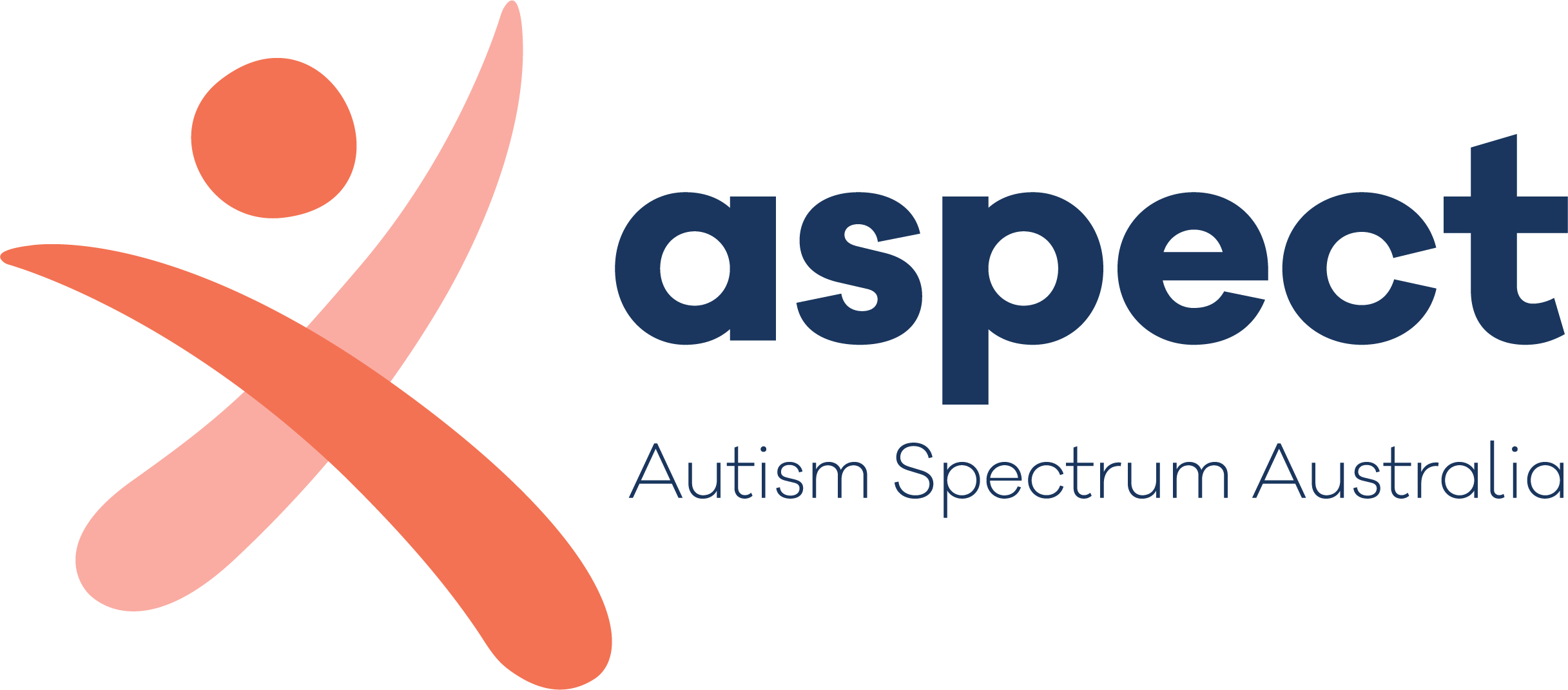
You may also like
